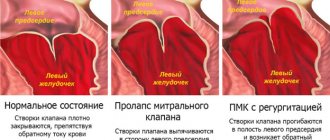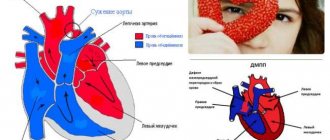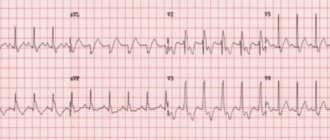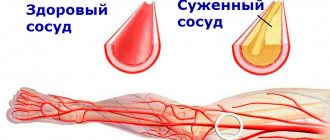Congenital heart disease is considered a generalized pathology and can manifest itself in different forms with different clinical pictures. The question of whether people with congenital heart disease are accepted into the army cannot be given an ambiguous answer. The medical commission makes a decision on the suitability of a conscript with congenital heart disease based on medical certificates and medical history. A citizen of military age receives exemption from the army if he has a second functional class. This type of pathology is revealed by symptoms incompatible with military service and dysfunction of internal organs against the background of congenital heart disease.
Will people with heart defects be accepted into the army in 2021?
Heart disease is always associated with danger and severity of the patient’s condition. It is impossible to even imagine that people with certain types of this disease are legally recruited for military service. However, officially, congenital heart disease is not a disease that prevents service in the Armed Forces.
And in 2021, heart disease is a general diagnosis and only young men with specific forms of the disease can apply for the non-conscription category.
Heart disease is a general diagnosis and can be understood as various physiological changes and diseases that can lead to heart failure. Most often, defective functioning of the mitral valve, aortic stenosis or ventricular obstruction are recorded. Some of these pathologies, to a certain extent and in a specific functional class, are assessed as life-threatening, incompatible with physical activity and overexertion of the disease.
The examination is carried out in accordance with Article 42 of the Schedule of Diseases.
Congenital heart defect
Heart disease is often accompanied by heart failure. There are four main functional classes:
- The first functional class is characterized by the fact that the patient does not experience serious changes. He may be limited in physical activity to some extent, but there are no compelling arguments for exemption from service. A conscript with this type of pathology belongs to fitness category B and will serve in the army with certain restrictions;
- the second functional class is characterized by the presence of certain complications. If the conscript’s health condition falls under this group, he receives fitness category B and is enlisted in the reserves;
- the third and fourth functional classes involve the complete release of a young man from service and the provision of a military ID card for health reasons.
The regulatory document Schedule of Diseases includes an article according to which the emphasis can be placed not on the disease, but on possible complications and consequences if the patient’s regimen is violated. Some of the diseases indicated in the document can progress and develop into independent pathologies, becoming the reason for release from service and enrollment in the reserves.
Mitral canal prolapse. This is one of the congenital heart defects. Currently, a distinction is made between primary and secondary MVP. The causes of the primary type of disease are heredity and congenital pathologies of connective tissue. The causes of the secondary type of disease are rheumatism, inflammatory heart disease, chest injuries and other pathologies.
There are 3 degrees of pathology. The higher the degree, the greater the deflection of the valves during heartbeat.
In the first degree of the disease, no serious changes are recorded. The disease may remain invisible and not cause much discomfort. UPS of this form cannot serve as a reason for exemption from the army.
The second and third degrees can lead to deterioration of the valve. At these stages, regurgitation is observed, that is, pathological changes in the direction of blood flow. The condition leads to serious impairments and problems. The patient experiences oxygen deprivation, rapid heartbeat, and dizziness. If you have a secondary military certificate of 2 or 3 degrees, the conscript receives category B and is enlisted in the reserves.
Pulmonary valve stenosis. There is a narrowing at the site of the valves that regulate the flow of blood from the right ventricle to the pulmonary artery. This leads to the heart working harder. The heartbeat increases to force blood through the narrowed gap. This anomaly accounts for 10% of heart defects, and a conscript with such a defect receives exemption from the army (category B).
Transposition of the great vessels. The pathology is revealed by a violation of the location of the pulmonary artery and aorta, which, as a result of exchanging places, are connected to the wrong chambers of the heart. CHD causes the organs to receive blood that is not sufficiently saturated with oxygen. The patient complains of rapid heartbeat, rapid fatigue, cyanosis, and deformation of the nail plates. A conscript with such a pathology receives exemption from the army.
Acquired heart defect
Up to 90% of acquired defects develop against the background of rheumatic diseases. Based on the state of general hemodynamics, compensated, subcompensated and decompensated defects are distinguished.
Valve defects cause increased load on the corresponding parts of the heart, myocardial hypertrophy and ultimately heart failure. The suitability of a conscript with an acquired heart defect is determined according to the functional class based on the document Schedule of Diseases.
The clinical picture of the disease depends on the affected valve or combination of affected valves. The patient complains of tachycardia, shortness of breath, edema and other signs characteristic of heart failure.
The main type of treatment for acquired defects is surgery.
What are heart defects?
There are two types of heart defects:
- Congenital (hereditary chromosomal mutations, bad habits during pregnancy or previous infections);
- Acquired (possible causes: inflammation of the inner lining and valve apparatus of the heart, destruction of the heart valves, atherosclerosis).
Heart defects include:
- Defects of intercardiac septa;
- Defects of the aortic orifice and pulmonary artery;
- Valve defects (stenosis, insufficiency).
Do they take into the army with a bicuspid aortic valve?
Bicuspid aortic valve is a congenital heart defect. According to Article 42 of the Schedule of Diseases, congenital heart valve defects in the absence of heart failure (point c) are grounds for exemption from the army with the assignment of fitness category B.
If a bicuspid aortic valve is diagnosed, then to be exempt from conscription, the heart defect must be accompanied by aortic regurgitation (clause d, Article 42). If a young man is diagnosed with a bicuspid aortic valve without signs of aortic regurgitation (point d), he is assigned conscription category B (military service with limited choice of troops).
Conditions for obtaining a military ID for heart disease
The decision of doctors and the draft committee will depend on the following factors: - whether the young man has heart failure: - what is the degree of blood outflow (degree of regurgitation) as it moves through the heart; - how heart valves work; — in what state of health and well-being the young man is at the time of the commission at the military commissariat.
All of the above conditions directly affect whether a person will be removed from military registration, drafted into the army, or released from it.
How to identify a heart defect
The specialist begins determining the presence of a heart defect with a conversation with the patient, the purpose of which is to clarify the existing symptoms. The main signs of the disease include:
- decreased ability to work and rapid fatigue;
- chronic fatigue, fainting, which have been observed since childhood;
- pallor, cyanosis of the skin;
- swelling;
- unstable blood pressure (high or low);
- shortness of breath with little physical activity;
- decreased immunity, provoking the development of various immune pathologies.
With congenital heart disease, the clinical picture is observed from childhood. When compiling an anamnesis, previous diseases and diagnoses, as well as surgical interventions, are taken into account.
To identify heart pathology, it is mandatory to measure blood pressure, study the condition of the skin, and listen to the heart. If necessary, to confirm the preliminary diagnosis, the patient is prescribed instrumental examinations:
- Electrocardiography. The method is effective for identifying various cardiac pathologies. The method makes it possible to record electric fields that arise during myocardial oscillations, which makes it possible to record deviations in the functioning of the heart.
- X-ray. The method allows you to determine anomalous phenomena visually.
- Ultrasound of the heart. Used when necessary to monitor the patient's condition.
The results of the examination are entered into the medical history, which the patient, along with various certificates and a doctor’s opinion, provides to the military medical commission to obtain a deferment or exemption from service due to health reasons.
How to get a deferment or exemption
To receive a deferment, a conscript must submit to the military registration and enlistment office a medical document that proves that he has a congenital or acquired heart defect that requires treatment both conservatively and surgically. The basis for a delay may also be evidence that the patient is undergoing a rehabilitation period after heart surgery. After the expiration of the recovery period, the conscript appears at the military registration and enlistment office and undergoes a second examination. If it is determined that health is fully restored after the operation, then he is sent to serve in the Armed Forces.
To receive exemption from the army under non-conscription category B, a conscript must have functional class 2, 3, 4 heart failure, severe heart rhythm disturbances, blood flow conduction failure, 2 and 3 degrees of mitral canal prolapse.
Congenital heart disease cannot be a reason for exemption from military service. To receive a non-conscription category or deferment, a conscript must prove the presence of a heart pathology that corresponds to a specific paragraph of Article 42 of the Schedule of Diseases.
How to get a military ID if you have a heart defect?
Not all young people agree that their illness is not a reason for exemption from the army. At the same time, the military commissariat has a different opinion, supported by the norms of the current legislation in the field of military service. Some heart problems are not a contraindication for service in units where men do not experience difficult physical exertion.
However, no one excludes an incorrect diagnosis being made during the commission, as well as other violations of the rights of adult citizens liable for military service, so it is important for conscripts to play it safe and turn to lawyers to appeal the decision made by the military registration and enlistment office and achieve a fairer outcome for themselves.
Reviews
Dear readers, was this article helpful? What do you think about serving in the military with a congenital heart defect? Leave feedback in the comments! Your opinion is important to us!
Marat
“I have had heart problems since childhood. When I was called for a commission at the military registration and enlistment office, I presented all the documents that proved that I had a serious heart defect with circulatory problems and significant heart failure. As expected, they assigned category B.”
Valentina
“My son was diagnosed with a bicuspid aortic valve. They thought that with such a heart defect they would be released from the army. However, the commission decided that he would serve in certain troops (category B), since he does not have a blood flow disorder.”
Diagnostics
To confirm the presence of a congenital or acquired heart defect, it is necessary to submit to the military conscription commission all documents indicating the presence of the disease. Pathology can be confirmed by the results of the following medical tests: echocardiography, electrocardiography, stress tests, radiography, cardiac catheterization and MRI.
Ivan Golubkin
Legal specialist and manager. Experience in the legal field - more than 10 years, in the field of assistance to conscripts - more than 3 years. Writes useful articles for conscripts.










